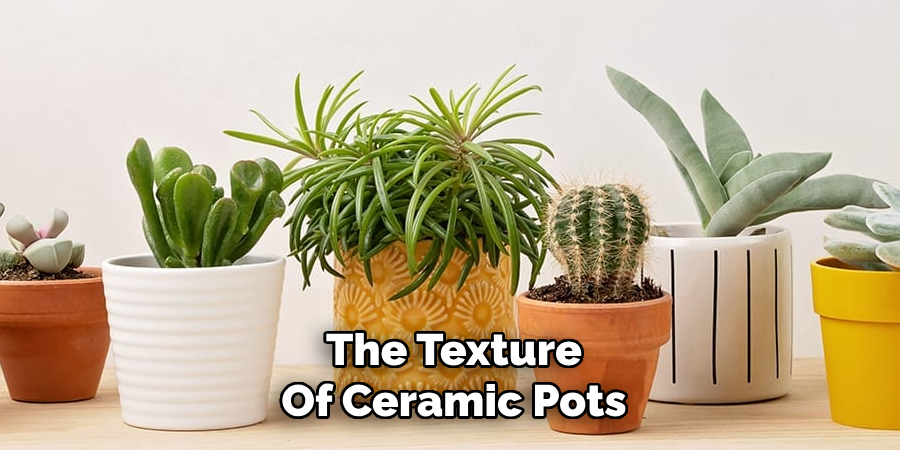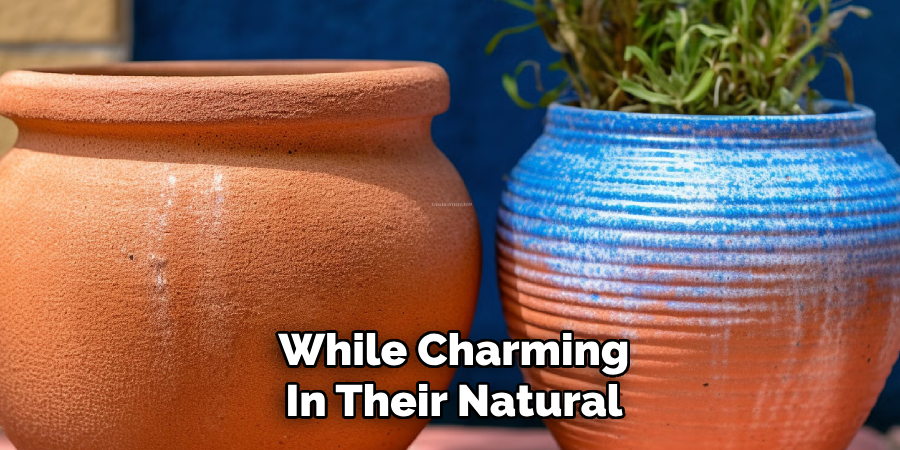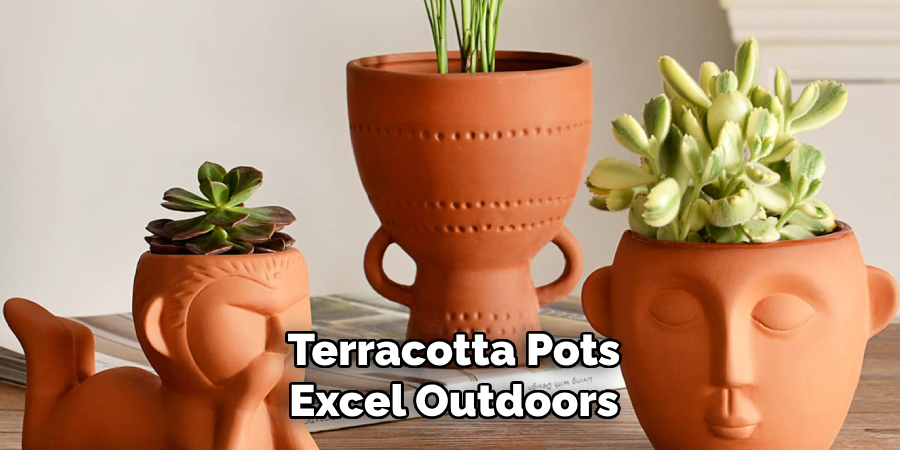Ceramic and terra cotta pots are both widely used in gardening and home décor, offering unique benefits to plant enthusiasts. While ceramic pots are often glazed and come in a variety of colors and designs, terra cotta pots are typically unglazed, with a natural reddish-brown hue.
Understanding the differences between these two types of pots is crucial because it directly impacts plant health, durability, and aesthetic appeal. For example, terra cotta pots are more porous, promoting better aeration for certain plants, whereas ceramic pots retain moisture longer, benefiting water-loving species.

Knowing how to tell if ceramic or terra cotta pot is essential for enhancing your gardening success and complementing your personal style. This article aims to serve as a comprehensive guide to identifying whether a pot is ceramic or terra cotta by examining their physical, visual, and tactile characteristics.
Physical Differences Between Ceramic and Terra Cotta Pots
Material Composition
Ceramic pots are crafted from clay that has been carefully fired at high temperatures, resulting in a smooth surface often enhanced with a glossy finish. This manufacturing process contributes to their sleek appearance and makes them less porous. On the other hand, terra cotta pots are made from unglazed clay fired at relatively lower temperatures. This gives them a distinct matte finish and porous nature, ideal for plants requiring better air circulation around their roots.
Weight and Durability
Ceramic pots typically have a heavier construction, which makes them more robust and better equipped to handle wear and tear. Their sturdiness also reduces the risk of accidental tipping over, an advantage for larger plants. Meanwhile, terra cotta pots are considerably lighter, providing flexibility in placement but making them more susceptible to cracking.
They are particularly vulnerable to cold weather and rough handling, which can compromise their integrity over time. Understanding these distinctions allows gardeners to select the pot that best suits their functional and aesthetic needs.
How to Tell if Ceramic or Terra Cotta Pot: Visual Clues for Differentiating Ceramic and Terra Cotta Pots
Color and Finish
Thanks to their glazed surfaces, ceramic pots typically come in a wide range of colors. These pots often feature a glossy or semi-glossy finish, which gives them a polished and vibrant appearance. On the other hand, terra cotta pots are naturally reddish-brown or orange in color. Their matte and unglazed surfaces project a more rustic and earthy aesthetic.
Texture
The texture of ceramic pots is usually smooth due to the glazing process. However, certain unglazed ceramic pots can have a slightly rough surface depending on the material and method of production. Terra cotta pots, by contrast, have a rougher texture due to their natural clay composition. When dry, the pores in the clay are more visible, adding to their distinct tactile quality.

Decoration
Ceramic pots often stand out with intricate painted designs, decorative patterns, or diverse glazes that range in color and finish. These artistic elements make them a preferred choice for those seeking statement pieces. Meanwhile, terra cotta pots are generally more understated, characterized by their plain and natural look. Although simpler in design, they can occasionally be found painted, offering a way to enhance their otherwise organic appearance.
Understanding these visual differences helps gardeners and decorators make informed choices based on their preferences for style and functionality.
Tactile Differences: How to Tell by Touch
Feel of the Material
Ceramic pots are notably smooth and cool to the touch, a result of their glossy glaze and dense structural composition. This polished surface gives them a refined and durable feel, making them easy to distinguish. On the other hand, terra cotta pots have a rougher texture, especially on the exterior. Their surface feels earthy and natural, warmed by their porous nature, which retains and interacts with heat differently.
Weight Consideration
There’s a clear difference in weight between the two materials. Ceramic pots are heavier and convey a sense of sturdiness and solidity when lifted. Their weight reflects the density of their construction and the additional glaze. Conversely, terra cotta pots are lighter and more fragile in comparison. They often feel less robust when picked up, making them less ideal for use in high-traffic or unstable areas.
Porosity Check
To determine if a pot is porous, simply moisten its surface and observe the reaction. Terra cotta will absorb water almost immediately, as its porous structure allows the material to soak in moisture. Ceramic pots, however, typically do not absorb water unless they are unglazed, as their glazed finish creates a waterproof barrier. This test makes it easy to differentiate between the two materials.
How to Test for Glaze and Coating
Glaze on Ceramic Pots
Ceramic pots are often coated with a glassy layer known as glaze, which gives them a shiny appearance and makes them waterproof. This protective coating enhances the pot’s aesthetic appeal and prevents water from seeping through the material. To test whether a pot is glazed, carefully scratch the surface using a fingernail or a coin. If the surface is smooth, shiny, and resistant to scratches, it is likely glazed ceramic. This simple test helps to confirm the presence of glaze and ensures you are aware of the pot’s waterproof properties.

Unglazed Terra Cotta Pots
Unlike ceramic pots, terra cotta pots are typically unglazed and porous. Their uncoated surface feels rough to the touch and often displays natural imperfections, highlighting the raw nature of the material. To test for the lack of glaze, briefly splash some water onto the pot’s surface.
Terra cotta will absorb the water, leaving a darker, damp-looking patch that fades as the moisture evaporates. On the other hand, glazed ceramic pots will cause water to bead up or remain on the surface without being absorbed.
Appearance of the Interior
The pot’s interior can also provide clues about its material and finish. Ceramic pots often feature a smooth, uniform coating on both the inside and outside, consistent with the glazed surface. Conversely, terra cotta pots typically reveal their raw clay composition on the inside, showcasing a coarse texture that contrasts with the polished look of glazed ceramics.
Durability and Longevity Differences
Ceramic Pot Durability
When properly cared for, ceramic pots can last for many years, especially indoors or in moderate climates. Their sturdy construction and glazed surfaces offer protection against the elements, making them generally more resistant to wear and tear.
However, they can be susceptible to cracking or breaking under extreme weather conditions, such as drastic temperature changes or heavy impacts. Despite these risks, ceramic pots often maintain their aesthetic appeal and structural integrity over time if handled carefully.
Terra Cotta Pot Durability
While charming in their natural, earthy appearance, Terra cotta pots are more prone to cracking and damage due to their porous nature. This porosity makes them particularly vulnerable in freezing temperatures, as water absorbed by the material can freeze and expand, causing the pot to crack. Additionally, terra cotta pots can degrade faster in harsher outdoor environments without proper care.

Maintenance
Ceramic pots typically require less maintenance compared to their terra cotta counterparts. Their non-porous, glazed surfaces provide a natural barrier against water absorption and weathering, reducing the need for additional treatments.
On the other hand, terra cotta pots may require sealing or a protective coating to enhance their durability and extend their lifespan, particularly when subjected to outdoor use or unpredictable weather conditions. Proper care can help mitigate their vulnerabilities and ensure both types of pots remain functional and aesthetically pleasing for longer periods.
How to Determine by Sound
Tapping Test
A simple tapping test can be highly effective in distinguishing between ceramic and terra cotta pots. Gently tap the pot with your finger or a small object. Ceramic pots typically produce a solid, ringing sound, often resembling the resonance of a bell. This is due to their dense, non-porous material composition. On the other hand, terra cotta pots emit a duller, hollow sound, reflecting their porous and less compact structure.
Why Sound Matters
The sound a pot produces offers valuable insight into its material composition. Ceramic pots’ ringing tone highlights their durability and ability to resist water absorption, while the more muted sound of terra cotta indicates its porous nature and potential vulnerability to moisture. This simple method can help gardeners and enthusiasts make informed decisions when selecting pots based on their functional and aesthetic needs.
Common Uses for Ceramic and Terra Cotta Pots
Ceramic Pots
Ceramic pots are best suited for indoor plants, offering both functional and decorative advantages. Their non-porous surface helps retain moisture, making them ideal for plants that thrive in humid or stable moisture conditions. These pots also provide more stability due to their heavier weight, which is particularly beneficial for larger plants or those in high-traffic areas. Additionally, ceramic pots come in various colors, shapes, and finishes, enhancing their appeal for spaces where aesthetic variety is desired.

Terra Cotta Pots
Terra cotta pots excel outdoors and are perfect for plants that prefer dry, well-draining soil, such as succulents and cacti. Their porous nature allows for better airflow and evaporation, preventing overwatering issues common to many outdoor plants. These pots are a favorite among gardeners for their rustic charm and are frequently used in traditional gardening and landscape designs. Terra cotta’s timeless appeal makes it a staple for outdoor plantings.
Conclusion
Understanding their key differences is crucial when deciding between ceramic and terra cotta pots. Ceramic pots are heavier, with a smooth, often glazed surface that enhances moisture retention and durability, making them ideal for humid environments and indoor plants.
Terra cotta pots, in contrast, feature a porous texture that promotes airflow and drainage, perfect for dry, outdoor settings or drought-tolerant plants. Consider your plant’s specific needs and environmental conditions to choose effectively. For those wondering how to tell if ceramic or terra cotta pot suits their garden, assess factors like soil type, moisture requirements, and aesthetic preference for the best results.
Professional Focus
Harry Ciotti is a highly skilled kiln operator with a sharp eye for detail and an in-depth understanding of the firing process. His expertise ensures that each ceramic piece reaches its full potential, perfectly balancing strength and beauty. Harry takes pride in overseeing the final stage of pottery creation, transforming raw clay into durable and stunning works of art.
About the Author
Harry Ciotti is a dedicated kiln operator and ceramic artist who brings passion and precision to every piece he fires. With a deep commitment to craftsmanship, Harry ensures that every ceramic creation is fired to perfection, from delicate vases to robust sculptures. He not only operates the kiln, but understands the unique needs of each piece, ensuring it reaches its full artistic potential. Through his work, Harry blends precision with artistry, making every firing a story of transformation.
Education History
University: California College of the Arts
Degree: Master of Fine Arts in Ceramics
Harry’s advanced education in ceramics has refined his technical skills, particularly in kiln operation, firing processes, and ceramic artistry. His educational background equips him to produce top-quality ceramic pieces that reflect both technical excellence and artistic expression.
Expertise:
- Kiln Operation and Firing Techniques
- Ceramics Creation (Functional and Artistic)
- Precision Craftsmanship
- Glazing and Texture Techniques
- Ceramic Artistry and Storytelling
